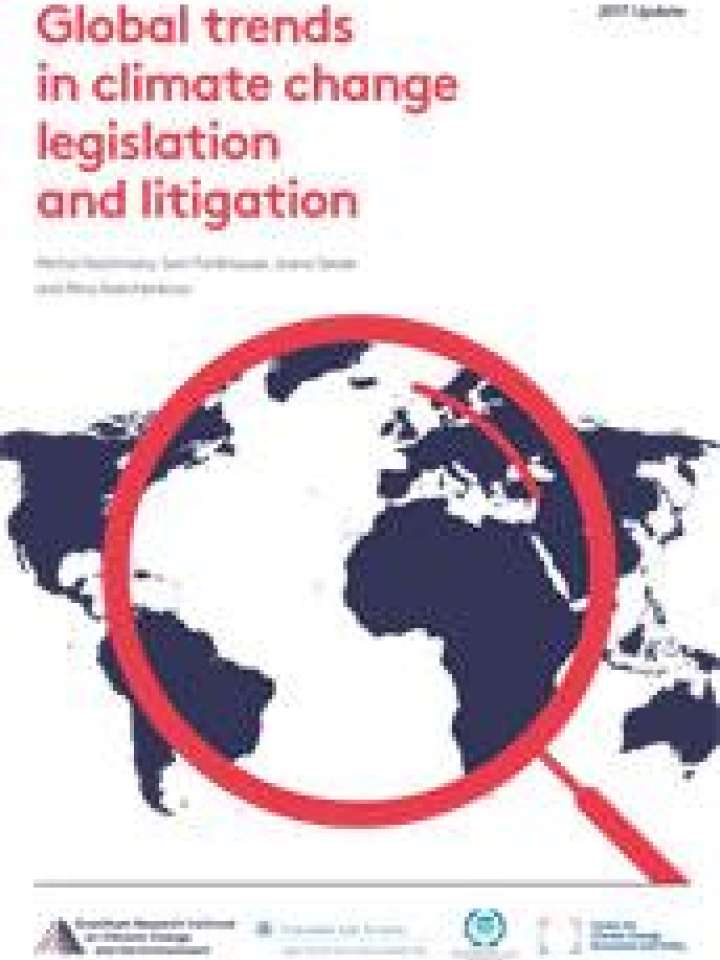Global trends in climate change legislation and litigation: 2017 update
This report summarises key trends in climate change legislation and litigation. It is the sixth stock-take in a series of global Climate Legislation Studies that dates back to 2010. The 2017 edition covers legislative activities in 164 countries, up from 99 countries in 2015. For the first time, this edition also includes analysis of climate change litigation.
The information is drawn from two major databases, Climate Change Laws of the World and Climate Change Litigation of the World, which are maintained jointly by the Grantham Research Institute on Climate Change and the Environment and the Sabin Center on Climate Change Law at the Columbia Law School.
Key messages
- There are now over 1,200 climate change or climate change-relevant laws worldwide, a twentyfold increase over 20 years.
- The rate at which new laws are passed has decreased from over 100 new laws per year in 2009–13 to around 40 new laws in 2016. This reflects the large amount of ground that existing climate laws already cover.
- The challenge for the future lies in strengthening existing laws and filling gaps, rather than devising new frameworks. Most countries have the legal basis on which further action can build.
- Low-income countries are progressively active on climate change legislation. Their focus is on climate resilience rather than emissions.
- Climate change needs to be integrated better into mainstream development strategies. Only four in 10 countries have factored climate change explicitly into their development plans.
- The courts are complementing the actions of legislators, ruling on the implementation of existing climate laws or providing a basis for the regulation of greenhouse gas emissions. Outside the United States, there have been over 250 court cases in which climate change is a relevant factor.
- Two-thirds of court cases have either strengthened or maintained climate change regulation. In one-third of cases, policies have been weakened.
Explore further
